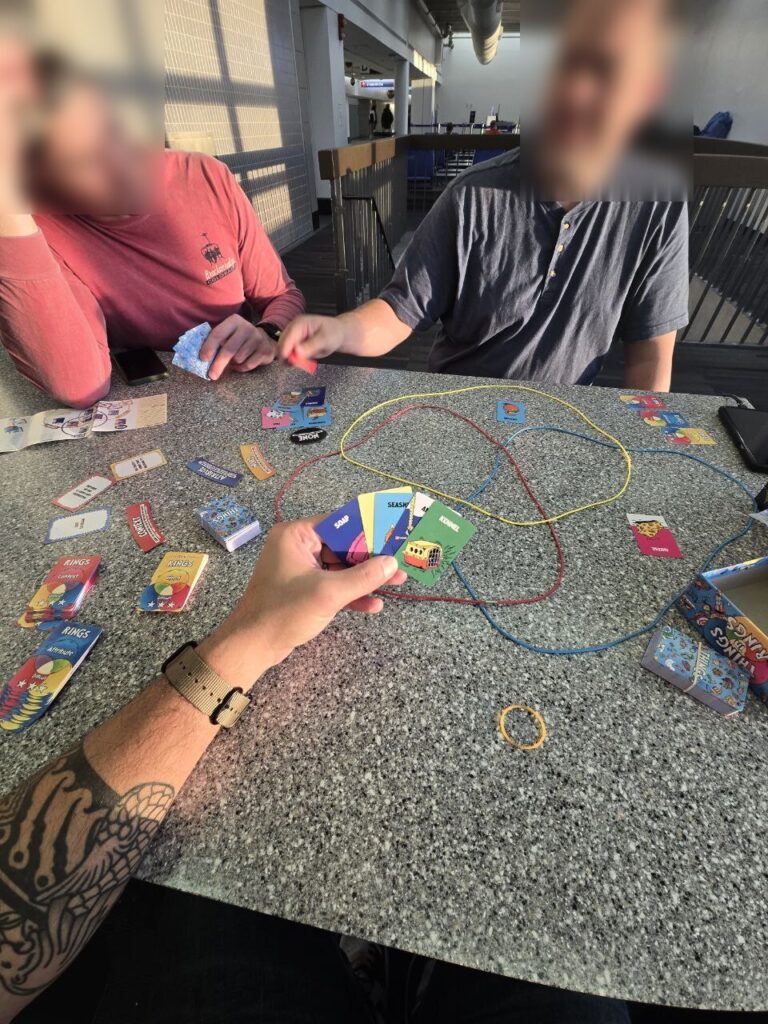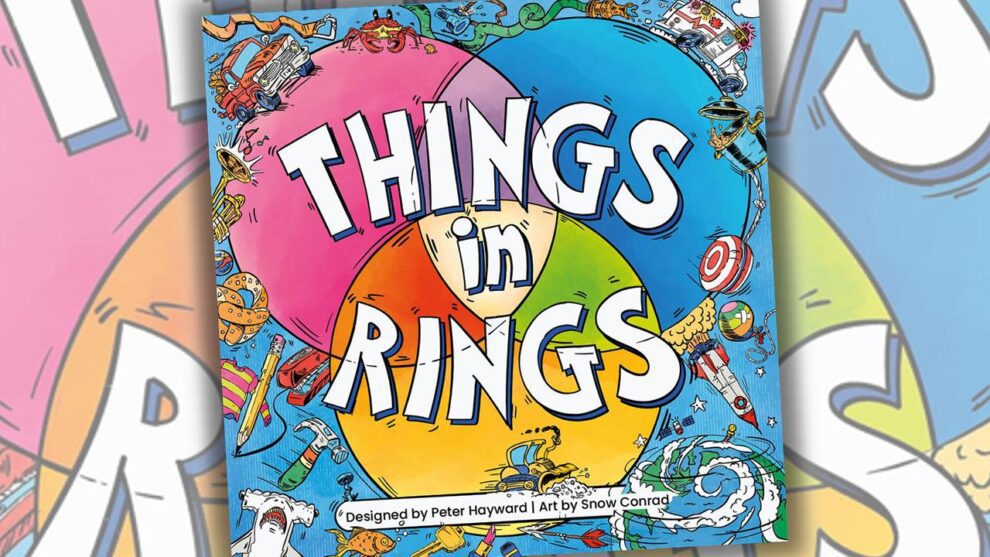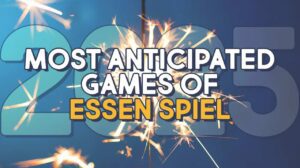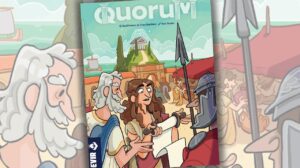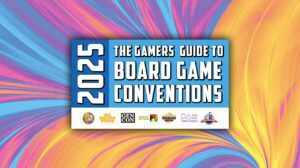Things in Rings is a 2-6+ player party game that stretches your mind by connecting the dots in a Venn diagram. The objective is to shed your hand of five “Things” cards before other players, all at the discretion of the “knower.” The Venn diagram is comprised of three categories: Word, Context, and Attribute. One player takes on the role of the “knower,” drawing a set of three cards that match each of the categories. Only the knower knows all and judges accordingly!
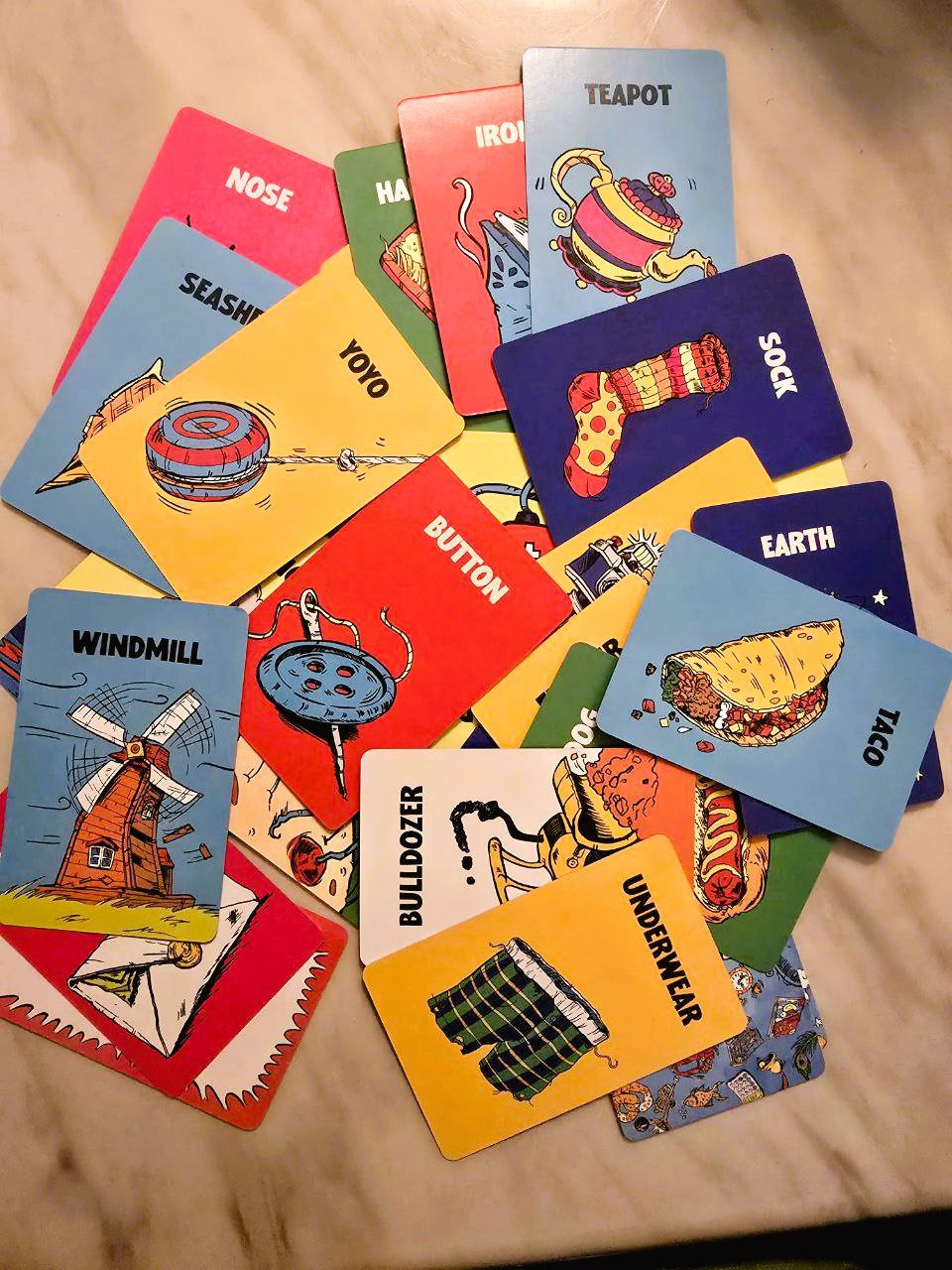
Gameplay and Design
Category cards vary in difficulty, marked with 1-3 stars (three being the most difficult). The knower seeds the rings by placing up to three “Things” cards in any of the spaces within the Venn diagram, which include both individual and overlapping category spaces. There is also a “None” space for cards that don’t fit any of the categories, which can be just as insightful for players! These seeded cards act as breadcrumbs, guiding players as they attempt to connect the dots.
Each player places one card from their hand into the space where they think it fits in the big picture. The knower decides if the card correctly fits based on their exclusive knowledge of the categories. If the card is incorrect, the knower moves it to their perceived correct spot, and the player must draw a replacement card. If the card is correct, the player gets another chance to play, potentially chaining their successes. Players don’t necessarily need to guess the categories accurately; they simply need to connect the dots well enough to succeed. A co-op variant allows the knower to place one card per round to assist the group. The game is won if all players correctly place their five “Things” cards or lost if the knower runs out of cards from their starting hand.
The game features charming, Dr. Seuss-inspired art on the “Things” cards, which include single-word, well-known objects like dogs, staplers, teapots, socks, bulldozers, and comets. The compact, backpack-friendly box includes roughly 240 “Things” cards, 72 category rule cards (24 per category), and three durable ring strings.
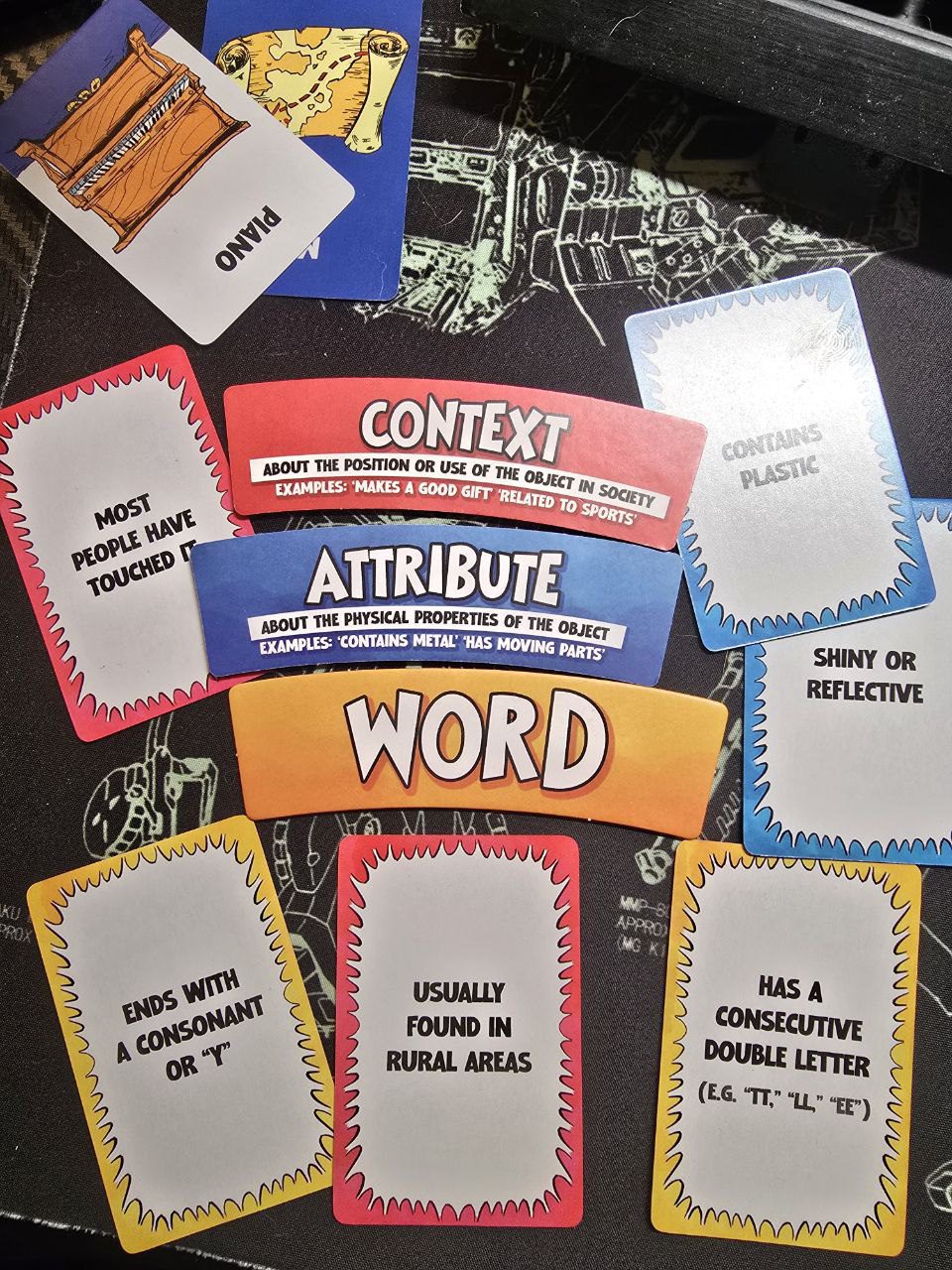
Verdict
Things in Rings shines brightly in the oversaturated world of word-association party games. The gameplay is simple, yet the mental challenge of making connections provides immense satisfaction with correct guesses and shock at incorrect ones.
Subjectivity is the game’s core concept. While the word cards represent simple, everyday objects, the broad parameters of the categories leave them open to interpretation. The “Word” category, often focused on structure (e.g., syllables or vowel counts), is straightforward, while the “Context” and “Attribute” categories add complexity with phrases like “Found MOSTLY outside” or “EASY to clean.” These prompts often reveal players’ unique perceptions and experiences.
Even the card art is up for debate. For example, a “Has holes” clue paired with a button card (art showed four holes) sparked laughs during explanations. Players were eager to take turns as the knower, with one describing it as a “godlike” role, having complete control over the game.
While the game’s subjectivity is its greatest strength, it can also be its Achilles Heel. Players might feel frustrated if they can’t align with the knower’s perspective. If the knower is too strict, the game can drag, leading to diminished morale. The rules emphasize that the knower’s role is to facilitate the game, not defeat the players.
The game shines in larger groups but remains fun with two players, offering an intimate glimpse into each other’s thought processes. While designed for 2-6 players, it easily scales for more, with additional clues adding complexity. Its reliance on theory and testing creates moments of pure joy, especially when cards are placed correctly.
Memorable moments include dramatic comebacks, such as a player winning by perfectly placing all remaining cards in one turn, drawing cheers and groans alike.
The scientific method of theory isn’t always perfect. A player may know all the clues but their cards don’t fit in any spots. It may even be strategic to throw cards that will be incorrect, to draw something more fitting. I had this same experience in The Alchemists where I had figured out the cipher but didn’t have enough resources to publish the findings! The “none” spot (meaning a thing doesn’t fit in the rings) can be just as insightful. The category chits, which include examples, are a thoughtful design element that aids players’ theorization and thinking processes.
The box includes 240 “Things” cards and 72 rule cards for variety. While repetition can occur, mixing rule card levels could boost replayability. The quick 20-minute playtime and whimsical Dr. Seuss-style art make it a must-play party game staple.
